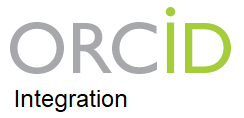Corticoides: El lado oscuro de una buena idea
Autores/as
DOI:
https://doi.org/10.37980/im.journal.revcog.2019806Resumen
[Corticoids: the dark side of a good idea]
Resumen
Los corticoides son una de las terapias materno fetales más efectivas de la medicina moderna. Miles de niños en todo el mundo sobreviven cada año gracias a sus efectos, ayudándolos a sobreponerse a las complicaciones propias de la prematuridad, ya sea espontánea o iatrogénica (positiva o negativa). Sin embargo, los corticoides son drogas poderosas con indicaciones muy precisas en la vida extra uterina. Su uso en el embarazo y la capacidad que tienen de afectar de múltiples formas al feto en desarrollo se está empezando a investigar y los resultados nos muestran una realidad que no estábamos percibiendo. La evidencia actual nos debe obligar a pensar en las consecuencias y a realmente evaluar riesgos vs. beneficios antes de ordenar su aplicación rutinaria.
Abstract
Corticosteroids are one of the most effective maternal fetal therapies in modern medicine. Thousands of children around the world survive every year thanks to their effects, helping them to overcome the complications of prematurity, whether spontaneous or iatrogenic (positive or negative). However, corticosteroids are powerful drugs with very precise indications in extra uterine life. Their use in pregnancy and their ability to affect the developing fetus in multiple ways is beginning to be investigated and the results show us a reality that we were not perceiving. The current evidence should force us to think about the consequences and to really evaluate risks vs. benefits before ordering its routine application.
Publicado
Número
Sección
Licencia
Derechos autoriales y de reproducibilidad. La Revista RevCog es un ente académico, sin fines de lucro, que forma parte de la Sociedad Centroamericana de Ginecología y Obstetricia. Sus publicaciones son de tipo ACCESO GRATUITO y PERMANENTE de su contenido para uso individual y académico, sin restricción. Los derechos autoriales de cada artículo son retenidos por sus autores. Al Publicar en la Revista, el autor otorga Licencia permanente, exclusiva, e irrevocable a la Sociedad para la edición del manuscrito, y otorga a la empresa editorial, Infomedic International Licencia de uso de distribución, indexación y comercial exclusiva, permanente e irrevocable de su contenido y para la generación de productos y servicios derivados del mismo.








